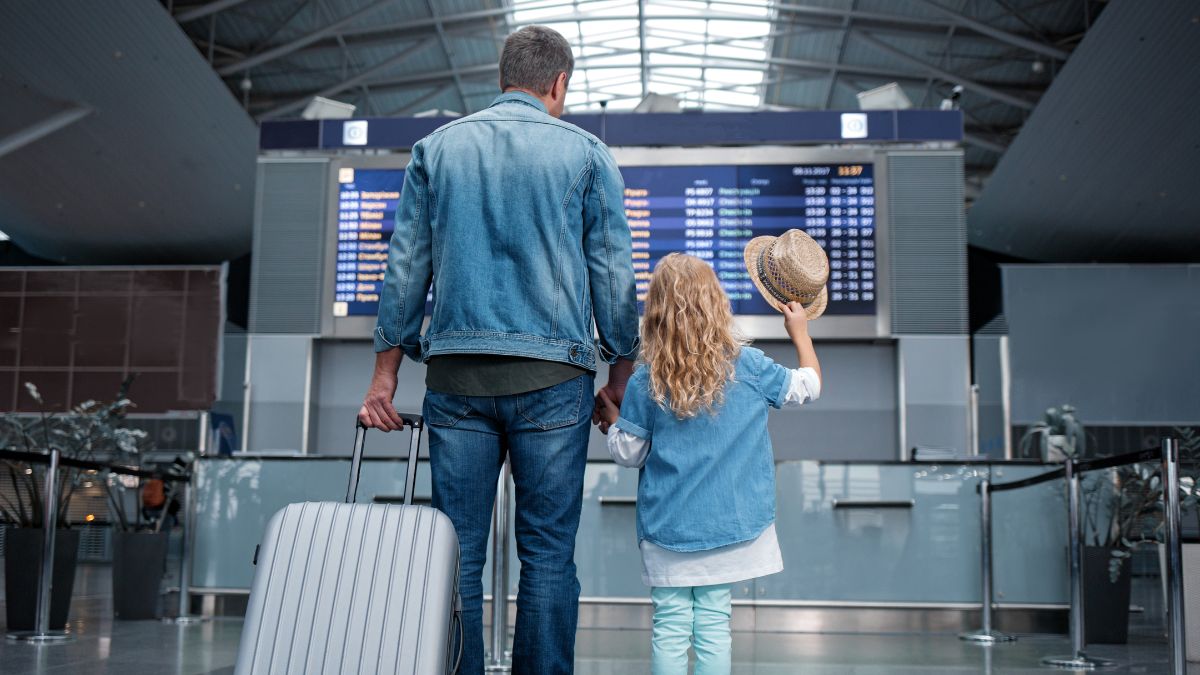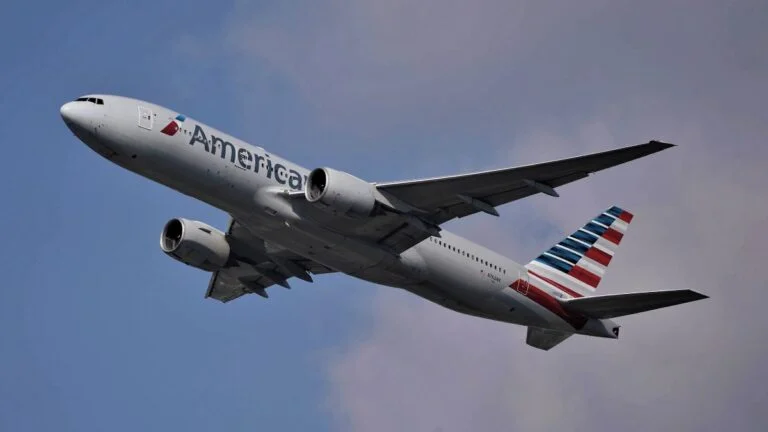Do Airlines Add Flights When Sold Out? A Deep Dive into Air Travel Demand

As participants in Amazon Associates and other programs, we earn from qualifying purchases. This comes at no additional cost to you. For more details, see our Affiliate Disclosure.
Have you ever wondered what happens when a flight is fully booked? Does the airline simply turn away potential passengers or do they add another flight to accommodate the overflow? In the complex world of air travel, understanding how airlines respond to demand is more intricate than it might seem at first glance. In this article, we take a deep dive into the strategies airlines deploy when faced with soaring ticket sales, offering insights into the ever-evolving landscape of air travel.
HIGHLIGHTS
- Sold-out flights are more complex than just adding new ones; factors include airport slots, operational costs, resources, and seasonal demand.
- Revenue Management Systems play a pivotal role in optimizing airline revenue, adjusting ticket prices based on demand and ensuring seat allocation.
- From a passenger’s perspective, sold-out flights can offer potential compensation and upgrades, but also come with limited flexibility and crowded cabins.
- Major airlines’ responses to sold-out flights include waitlisting, offering flexible rebooking options, and utilizing larger aircraft.
The Basics of Airline Demand and Capacity
At its core, the aviation industry operates on a delicate balance of supply (capacity) and demand. Let’s break down these two foundational concepts:
Demand in the Airline Industry
Demand in aviation refers to the number of passengers or cargo seeking to travel from one destination to another. Various factors influence this demand, including economic conditions, tourism trends, business activities, and even global events.
For instance, the summer months often see a spike in demand due to holiday travels, while a major conference in a city can suddenly boost demand for flights to that particular destination.
Capacity in the Airline Industry
Capacity, on the other hand, refers to the number of seats (for passengers) or weight (for cargo) that an airline can offer between two destinations over a specific period.
This is determined by factors such as the number and size of aircrafts, flight frequency, and the regulatory permissions in place.
The Interplay of Demand and Capacity
Airlines strive to match their capacity closely with demand. Underestimating demand can mean missed revenue opportunities, while overestimating can lead to underfilled flights and wasted resources.
To ensure profitability, airlines use advanced forecasting tools and strategies, constantly analyzing market data and adjusting their flight schedules accordingly.
Dynamic Pricing and Yield Management
One key strategy employed by airlines is dynamic pricing, where ticket prices fluctuate based on demand. When demand is high, prices rise; when it’s low, prices decrease.
This is coupled with yield management, a technique where airlines aim to maximize the revenue generated from a fixed seat inventory, adjusting prices and availability in real-time.
Challenges in Balancing Demand and Capacity
While the interplay of demand and capacity might seem straightforward, achieving an optimal balance is anything but. External factors such as weather disruptions, geopolitical events, or sudden global crises can swiftly change demand patterns.
Moreover, airlines have to consider operational costs, competition, and customer satisfaction when deciding how to adjust their capacity.
The balance of demand and capacity is a dynamic and complex process in the airline industry, demanding careful management and strategic foresight. As we delve deeper, we’ll explore how airlines respond when flights sell out and the intricacies involved in adding more flights or adjusting existing ones.
Do Airlines Typically Add More Flights?
The notion of airlines simply adding more flights when one sells out is appealing in theory, but in practice, it’s more complicated. Here’s a closer look:
When an airline notices consistent high demand for a particular route, it considers several factors before adding extra flights.
Firstly, there’s the logistical challenge. Airports have limited slots for takeoffs and landings. Securing an additional slot, especially at busy airports, can be challenging and often expensive.
Secondly, airlines need to ensure they have the necessary resources to support extra flights. This includes having available aircraft, crew, and ground services. The decision isn’t as simple as rerouting a plane; it involves intricate planning and scheduling.
Cost is another significant consideration. While the prospect of selling more tickets is lucrative, airlines have to weigh this against the operational costs of an additional flight. Fuel, crew wages, airport fees, and potential overnight accommodations for the crew can quickly add up.
There’s also the issue of competition. If multiple airlines operate on the same route, one airline adding more flights could lead to a price war, potentially driving down profitability for everyone involved.
Lastly, demand can be seasonal or event-driven. A sold-out flight during a holiday season or a major event doesn’t necessarily mean that the same demand will exist year-round. Airlines have to distinguish between short-term spikes and long-term trends.
Do Sold Out Flights Become Available Again?
Yes, sold-out flights can sometimes become available again. This can happen for various reasons, including passengers canceling or changing their bookings, airlines releasing seats that were initially held but not confirmed, or adjustments made in the seat inventory due to operational reasons like an aircraft change.
Automated systems in airline reservations often reevaluate bookings and release unconfirmed reservations back into available inventory.
However, there’s no guarantee that a seat will open up on a flight that’s currently sold out. For those hoping to get a spot, it can be beneficial to check the airline’s booking platform regularly or set up alerts if the service is available.
Alternatively, consider getting on a waitlist if the airline offers one, or speaking directly to airline representatives who might have up-to-date information on seat availability.
Factors Influencing Airlines’ Decision to Add Flights
The decision to add flights to an airline’s schedule is multifaceted, influenced by a combination of economic, logistical, and market-driven considerations. Here’s an exploration of the primary factors:
1. Persistent Demand: If an airline consistently observes high demand on a particular route, it suggests a potential opportunity for increased flight frequency. Monitoring ticket sales, waitlists, and feedback can provide insights into routes where additional flights might be lucrative.
2. Operational Capacity: An airline must have the resources to introduce more flights. This includes available aircraft, adequately trained crew, and the logistical support on the ground. The availability of these resources can dictate the feasibility of adding new flights.
3. Airport Slot Availability: Airports operate on strict slot allocations for takeoffs and landings. At busier airports, securing an additional slot can be particularly challenging. An airline needs a vacant slot that aligns with its intended flight schedule to add a new flight.
4. Economic Viability: The potential revenue from additional ticket sales must justify the operational costs, such as fuel, maintenance, crew salaries, and airport fees. If the economic assessment doesn’t support profitability, airlines might be reluctant to add flights.
5. Competitive Landscape: If multiple airlines serve the same route, the dynamics of competition play a role. An airline might add flights to gain a competitive edge, but it also risks saturating the market or igniting price wars, which can erode profits.
6. Seasonal and Event-driven Demand: Certain times of the year or specific events can drive increased demand for flights. Airlines might add flights during peak travel seasons or big events, but these are often temporary additions, reverting to regular schedules once the demand subsides.
7. Regulatory and Bilateral Agreements: Airlines sometimes operate under bilateral agreements between countries that define how many flights can be operated between them. Such agreements can limit the airline’s ability to add new flights even if there’s demand.
8. Customer Experience and Loyalty: Airlines aim to retain customer loyalty and ensure a positive travel experience. If customers frequently express a desire for more convenient flight timings or increased frequency, airlines might add flights to cater to their base and foster loyalty.
9. Environmental Considerations: Increasingly, airlines are becoming conscious of their environmental footprint. This means balancing the demand for more flights with the impact on carbon emissions and noise pollution.
While there’s a clear incentive to meet passenger demand, the decision to add flights hinges on a matrix of factors, each requiring careful consideration and strategic planning.
The Role of Airline Revenue Management Systems
In the highly competitive and nuanced world of aviation, optimizing revenue is of paramount importance. One of the most critical tools airlines employ to achieve this is the Airline Revenue Management System (RMS). Here’s an in-depth look into its role:
Understanding Revenue Management (RM)
At its essence, RM is about selling the right seat to the right person at the right time for the right price. It’s a complex dance of pricing and seat allocation that aims to maximize the potential revenue for each flight.
Dynamic Pricing and Inventory Control
One of the primary tasks of RMS is dynamic pricing. Based on real-time data, the system adjusts ticket prices to reflect current demand, competition, historical data, and other variables. Simultaneously, RMS also manages seat inventory, deciding how many seats to sell at a particular price point or when to restrict or open bookings for specific fare classes.
Forecasting and Analysis
RMS continuously analyzes vast amounts of data to predict future demand. This includes studying booking patterns, understanding seasonal trends, recognizing the impact of local events, and more. By forecasting demand, airlines can set their pricing and promotional strategies more effectively.
Overbooking Strategies
To counteract the effects of no-show passengers and cancellations, airlines often overbook flights. RMS plays a crucial role here, using historical data to calculate the optimal number of overbookings, ensuring that flights are as full as possible while minimizing the risk of having to deny boarding to passengers.
Competitive Analysis
RMS doesn’t operate in a vacuum. It continually scans the competitive landscape, adjusting pricing and strategies based on what rival airlines are doing. This ensures that an airline remains competitive in the market while protecting its revenue margins.
Integration with Other Systems
To function effectively, RMS integrates with other airline systems, such as reservation platforms, customer relationship management systems, and operational databases. This holistic approach ensures that revenue management decisions align with the airline’s broader operational and customer service goals.
Adjustments and Real-time Decision Making
The dynamic nature of air travel means that RMS needs to operate in real-time, making rapid decisions. Whether it’s reacting to sudden changes in demand due to external events or adjusting to operational disruptions like weather delays, the system is built to pivot quickly.
In the multifaceted realm of airline operations, the Revenue Management System stands out as a cornerstone. It not only ensures that airlines remain profitable in a tight-margin industry but also aids in navigating the ever-shifting dynamics of passenger demand and market competition.
How Major Airlines Respond to Sold-Out Flights?
When a flight is sold out, it’s generally a positive sign for airlines, indicating robust demand for a particular route. However, it also poses challenges in terms of customer service and revenue optimization. Here’s how major airlines typically respond:
1. Waitlisting: Many airlines offer a waitlist system, especially for premium or frequent fliers. If a passenger on the flight cancels or changes their reservation, those on the waitlist are given priority to fill the vacant spot, often based on loyalty status or fare class.
2. Offering Flexible Rebooking Options: Airlines often proactively reach out to passengers on sold-out flights, offering incentives to change to a different flight. This is a win-win as it can free up seats for high-demand flights (which might fetch a higher fare last-minute) and provides flexibility to passengers.
3. Utilizing Larger Aircraft: If a particular route consistently sells out and there’s a persistent demand, airlines might deploy larger aircraft for that route, increasing the number of available seats without adding additional flights.
4. Standby Lists: For passengers who have missed a connection or are looking to fly earlier or later than their booked flight, airlines offer standby lists. This allows them to take a seat on a sold-out flight if there are no-shows or last-minute cancellations.
5. Enhancing Yield Management: In scenarios of high demand, airlines might adjust their pricing strategies for the remaining seats, ensuring maximum revenue. This is particularly prevalent during peak seasons or major events.
6. Frequent Communication: When flights are sold out, airlines ramp up their communication efforts, reminding passengers about check-in times, baggage policies, and boarding procedures. This ensures smooth operations on the day of the flight and can reduce the number of no-shows.
7. Exploring Additional Flights: While not an immediate response, consistent high demand might lead airlines to analyze the feasibility of adding flights to their schedule, either seasonally or year-round.
8. Partnering with Other Airlines: In alliances or partnership agreements, if one airline’s flight is sold out, they might rebook passengers on a partner airline’s flight, ensuring customer satisfaction and retaining revenue within their alliance network.
9. Prioritizing Loyalty Members: Loyalty program members, especially those with higher-tier status, might receive preferential treatment during sold-out scenarios. This can include upgrades, rebooking on direct flights, or access to better alternative options.
While a sold-out flight signifies strong demand, it also brings forth logistical and customer service challenges. Major airlines deploy a combination of short-term solutions and long-term strategies to address these challenges and ensure both profitability and passenger satisfaction.
The Passenger’s Perspective: Pros and Cons
For passengers, encountering a sold-out flight can be both a blessing and a curse. Depending on the situation, there are several pros and cons to consider:
Pros:
1. Potential Compensation: In overbooking situations where airlines are looking for volunteers to take a later flight, passengers might be offered compensation in the form of vouchers, meals, accommodations, or even cash. This can be lucrative for those with flexible travel plans.
2. Upgrades: On fully booked flights, airlines might need to shift passengers around for various reasons. If the economy class is overbooked but there’s space in business or first class, some lucky passengers might get bumped up.
3. Efficient Boarding: A sold-out flight often means the airline will be more strict about boarding procedures, leading to a more organized and efficient boarding process.
4. Full Flights Often Fly: In instances where operational decisions are made about which flights to prioritize, fuller flights are less likely to get canceled compared to those with fewer passengers.
Cons:
1. Limited Flexibility: For those looking to change their booking last minute or stand by for an earlier flight, a sold-out flight leaves little room for maneuverability.
2. Crowded Cabins: A packed plane can feel cramped, with limited overhead bin space, potential delays in food and beverage service, and possibly a longer wait for restroom access.
3. Increased Delays: The more passengers there are, the higher the chances of potential hiccups, from boarding delays due to oversized carry-ons to increased time spent in loading and unloading baggage.
4. Lower Chance of Receiving Desired Seat: Those who didn’t choose their seat in advance or those booking last minute might have to settle for less desirable seating, like middle seats or seats near the lavatories.
5. Potential Denial of Boarding: In extreme cases where airlines have overbooked beyond the number of no-shows, some passengers might be involuntarily denied boarding. Though they’re typically compensated, it’s still a significant inconvenience.
From a passenger’s perspective, the experience of a sold-out flight can vary greatly. While there’s potential for unexpected perks, there are also clear downsides. Being aware of these can help travelers better navigate and negotiate their way through the situation.






